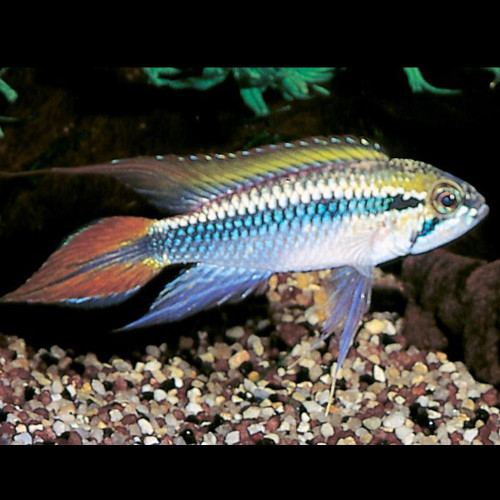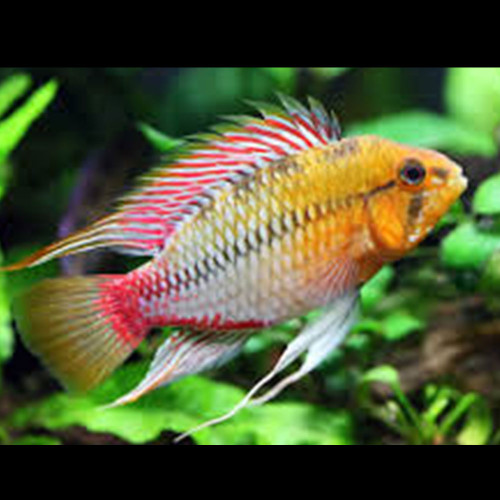Our Guide To Keeping Apistogramma agassizii Alenquer Red Tail Dwarf Cichlid
-
About Fish Species:
- Scientific name: Apistogramma agassizii (Alenquer Red Tail variant)
- Common name: Agassiz’s Dwarf Cichlid – Alenquer Red Tail
- Family: Cichlidae
- Origin: Alenquer region, Amazon River Basin, Brazil
- Adult length: 6–8 cm (males larger than females)
- Lifespan: 5 to 7 years
- Diet: Carnivore
- Care Level: Intermediate
- Temperament: Semi-aggressive (especially during breeding)
-
Tank Setup:
- A minimum tank size of 80L is suitable for a pair, with additional space needed for community setups.
- Provide a soft, sandy substrate and incorporate driftwood, leaf litter, and caves (such as coconut shells or flower pots) to mimic their natural habitat and provide breeding sites.
- Use dim lighting or floating plants like Amazon Frogbit or Salvinia to reduce light intensity.
-
Water Parameters:
- Prefers soft, acidic water with a pH of 5.5 to 6.8.
- Temperature range: 24 to 28°C (75 to 82°F).
- Water hardness: 1–8 dGH.
-
Filtration and Water Flow:
- Use a gentle filter with low to moderate flow. Sponge filters are ideal for fry safety and biological filtration.
- Regular water changes are crucial, as these fish are sensitive to poor water quality.
-
Diet:
- Provide a varied diet rich in protein: live or frozen foods like bloodworms, brine shrimp, daphnia, and microworms.
- They may accept high-quality micro pellets, but live/frozen food is best for breeding and colour enhancement.
-
Tank mates:
- Best kept with peaceful, non-aggressive species such as small tetras, pencilfish, hatchetfish, and Corydoras catfish.
- Avoid housing with other dwarf cichlids unless the tank is large enough to provide distinct territories.
-
Behavior and Compatibility:
- Territorial during breeding, especially males. Provide visual barriers and multiple hiding spots to reduce aggression.
- Outside of breeding, generally peaceful and shy. They do best in calm, well-structured environments.







